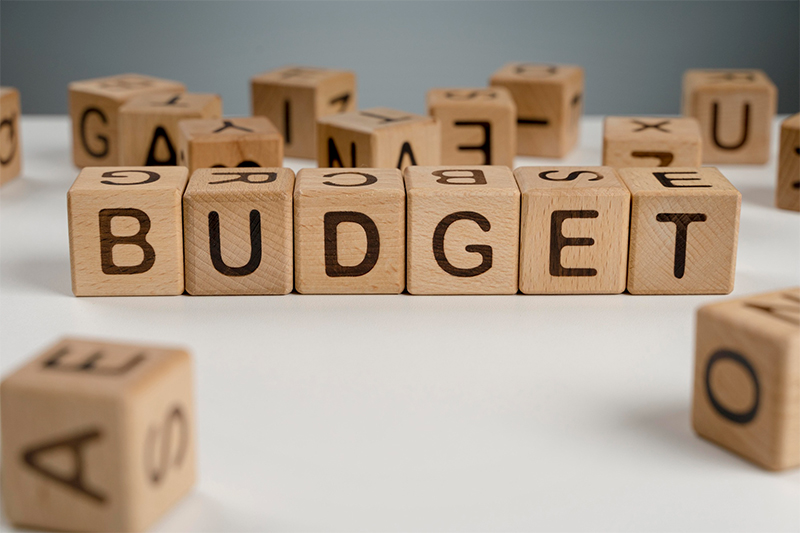Are you drowning in debt?
Here are some helpful tips to help you manage and reduce your debt.
1.
Create a Budget and Stick to It
To create a budget, start by gathering all of your financial information, including your income, expenses, and any debts or savings goals you have. Then, categorize your expenses into fixed costs (like rent or mortgage, utilities, and car payments) and variable costs (like groceries, entertainment, and dining out). Once you have a clear understanding of where your money is going, you can start to allocate specific amounts to each category.
When creating your budget, be realistic about your spending habits and consider any irregular expenses that may arise. Prioritize your financial goals, such as saving for retirement or paying off high-interest debt. Once your budget is in place, stick to it. This means being mindful of your spending, tracking your expenses, and making adjustments as needed.
Regularly review your budget to make sure you are staying on track and adjust as necessary. Set aside some money for unexpected expenses in an emergency fund so that you don’t derail your budget if something unexpected happens. [1]

2.
Focus on Ways You Can Increase Your Income
One way to increase your income is to seek outside hustles or part-time work. With the gig economy booming, there are countless opportunities to earn extra money outside of your regular job. This could include driving for a ride-sharing service, delivering food, or freelancing in your area of expertise. Taking on a part-time job or side hustle can provide you with extra income that can be used to supplement your regular earnings or put toward your financial goals.
Leveraging your existing resources can also be a great way to increase your income. If you have a spare room in your home, you could consider renting it out on a short-term rental platform to earn extra money.
If you have a car that sits idle for most of the day, you could consider renting it out or using it for a ride-sharing service to bring in additional income.
Consider looking for opportunities to advance in your current job or seek out higher-paying positions within your industry. This could involve negotiating for a raise or promotion, taking on additional responsibilities, or seeking out new job opportunities that offer higher salaries and benefits.
3.
Use the Debt Snowball Method
The Debt Snowball Method works by focusing on paying off the smallest debt first while making minimum payments on all other debts. Once the smallest debt is paid off, the amount that was being allocated to that debt is then rolled over to the next smallest debt, and so on. This creates a snowball effect, where the amount being used to pay off debts becomes larger and larger as each debt is paid off.
One of the key benefits of the Debt Snowball Method is that it provides a sense of accomplishment and motivation as debts are paid off one by one. This can be especially helpful for those who are feeling overwhelmed by their debt load. By starting with the smallest debt, individuals can quickly see progress and gain momentum in their debt repayment journey.
Another advantage of the Debt Snowball Method is that it allows individuals to build good financial habits. As they work through their debts, they learn to prioritize their spending, budget effectively, and make consistent payments towards their debts. This sets them up for long-term financial success and stability.

4.
Refinance your Debt
One common way to refinance your debt is to take out a new personal loan with a lower interest rate than your current debts. This can help you pay off your high-interest credit card debt or other loans more quickly, saving you money in the long run. It can also make your monthly payments more manageable, giving you some breathing room in your budget.
Another option for refinancing your debt is to use a home equity loan or line of credit. This involves borrowing against the equity in your home to pay off high-interest debt. Home equity loans typically have lower interest rates than other forms of debt, making them a cost-effective way to consolidate and pay off what you owe.
Carefully consider your options and make sure you’re making the right choice for your financial situation. Take the time to compare interest rates, loan terms, and fees from different lenders to find the best deal. You’ll also want to consider the impact of refinancing on your credit score and overall financial health.
5.
Stop Using Credit Cards
Using credit cards can make it all too easy to spend money that you don’t actually have. With the ability to make purchases on credit, it can be tempting to buy things that you can’t afford with the intention of paying for them later. However, this can lead to a cycle of debt that is hard to break free from.
Another downside of using credit cards is the potential for accumulating high-interest debt. If you carry a balance on your credit cards, you could end up paying a significant amount in interest each month, making it even harder to pay off your debt.
By putting a stop to using your credit cards, you can regain control over your finances and avoid the temptation to overspend. Instead of relying on credit, you can focus on using cash or a debit card for your purchases. This can help you stay within your budget and avoid adding to your debt. [2]

6.
Cut Back on Extras
Cutting back on extra spending helps in several ways to alleviate debt:
- Increased cash flow: By reducing extra expenses, more money is available to allocate towards debt payment, thus increasing cash flow.
- Priority spending: By eliminating non-essential expenses, the focus shifts towards paying off debt, making it a priority and reducing the financial burden.
- Accelerated debt repayment: With more funds directed towards debt, the balance decreases faster, saving on interest and potentially reducing the time needed to be debt-free.
- Financial discipline: Cutting back on extras encourages more prudent spending habits, which can help prevent future debt accumulation.
- Reduced stress: Though not a direct financial benefit, lowering debt and changing spending habits generally lead to less stress, improving overall well-being.
7.
Stop the Comparison Trap
Stopping the “comparison trap” can help with drowning in debt in several ways:
- Prevents overspending: When you stop comparing yourself to others, you are less likely to spend beyond your means to keep up with their lifestyle or possessions.
- Encourages financial discipline: Focusing on your financial situation helps prioritize your financial goals, making it easier to allocate funds towards paying off debt rather than trying to match others' spending.
- Reduces stress and dissatisfaction: Constantly comparing yourself to others can lead to financial decisions that are not in line with your values, causing stress and dissatisfaction. Refocusing on your financial well-being can lead to a more content and financially responsible mindset.
- Promotes better financial habits: By focusing on your own financial goals and not comparing yourself to others, you can develop healthy financial habits, such as budgeting and saving, which can prevent excessive debt accumulation.

Are you feeling overwhelmed by the weight of your debt?
It’s time to take control and find a way out of this financial struggle.
Contact Frego Law today and schedule a consultation with our dedicated bankruptcy lawyers.
FAQ's
Paying off debt is an important financial goal that can provide a sense of relief and freedom from financial burdens. Here are some general steps to help you pay off debt:
- List out the total amount owed, interest rates, and minimum payments for each debt.
- Create a realistic budget that allocates as much as possible while still covering essential expenses.
- Consider which debts to prioritize
- Try to make extra payments towards your debts whenever possible
- Look into debt consolidation options, such as a personal loan or balance transfer credit card
- Consider seeking advice from a financial counselor or debt management professional
Paying off debt takes time and discipline. Stay committed to your plan even when it feels challenging.
Remember that each person’s financial situation is unique, so it’s important to tailor your debt pay-off plan to fit your specific circumstances.
Bankruptcy can provide immediate relief for those facing overwhelming debt and financial hardship.
Chapter 7 Bankruptcy: In this type of bankruptcy, most unsecured debts, such as credit card debt and medical bills, are typically discharged, providing a fresh start for the debtor. It allows individuals to eliminate certain types of debts entirely.
Chapter 13 Bankruptcy: This option involves creating a repayment plan over three to five years to pay off all or a portion of the debt. This plan can also provide relief by reducing the total amount to be repaid and possibly lowering interest rates.
Bankruptcy can help with debt by stopping debt collection actions, such as wage garnishments and lawsuits. It can also temporarily halt foreclosure proceedings, allowing debtors to find a solution.
Getting out of debt with no money and bad credit can be very challenging, but it is not impossible. Here are some steps you can take to work towards getting out of debt in this situation:
Look for opportunities to increase your income, such as taking on a part-time job, doing freelance work, or selling items you no longer need. Every little bit of extra income can help.
Some creditors may be willing to work with you, especially if it means they will receive at least some repayment.
Look for assistance from nonprofit credit counseling agencies that may be able to help you negotiate with creditors, create a manageable repayment plan, and provide financial education.
While some debt relief options may not be suitable for everyone, it’s worth exploring options such as debt consolidation, debt management plans, or settlement programs. Be cautious and do thorough research before engaging with any debt relief companies.
It’s important to avoid taking on additional debt while you are working to get out of your current debt situation.
Sources:
[1] Solutions, R. (2023, October 18). What to Do if You’re Drowning in Debt. Ramsey Solutions. https://www.ramseysolutions.com/debt/drowning-in-debt
[2] Mayerle, M., C., B, N., & Mayerle, M. (2023, September 29). Drowning in debt? how to get out. CreditNinja. https://www.creditninja.com/blog/im-drowning-in-debt-how-to-get-out/




